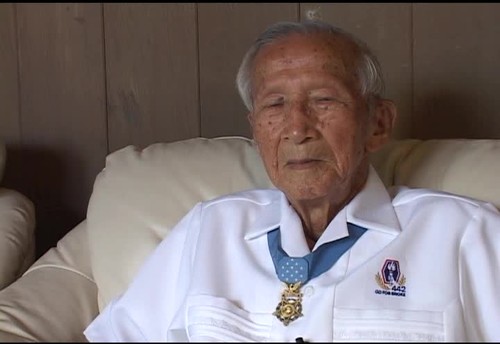Advanced Search
-
Hairston, Joseph Poor Battle Plans

[Annotator's Note: Joseph Hairston served in the army as a forward observer with the 599th Field Artillery Battalion, 92nd Infantry Division a
-
Hairston, Joseph Segment 10

Hairston notes that there was a lot of competition between the artillery batteries [Annotators Note: during combat in Italy].
-
Hairston, Joseph Segment 11

Hairston was sent to Randolph Field in Texas to learn how to fly [Annotators Note: after the end of World War II]. From there he went to Ft.
-
Hairston, Joseph Segment 12

During the last few days of the war there was very little action. Most of the Germans were figuring out a way to surrender or get away.
-
Hairston, Joseph Segment 13

Recently Hairston went to artillery OCS [Annotators Note: Officer Candidate School] to learn how today's generations are trained.
-
Hairston, Joseph Segment 14

People in combat are people in combat. Hairston does not believe in women in combat. He is the father of 4 daughters and 4 granddaughters.
-
Hairston, Joseph Segment 6

The war ended on May 8th, 1945. Coincidentally it was Hairston's birthday.
-
Hairston, Joseph Segment 7

Hairston was puzzled how in World War I and World War II, African Americans were labeled as being inefficient soldiers.
-
Hairston, Joseph Segment 8

When Hairston was in Italy he received and gave favorable treatment from and to the Italians.
-
Hairston, Joseph Segment 9

Hairston operated a Howitzer during the war. He notes that artillery is never really precise.
-
Hajiro, Barney Distinguished Service Cross

Barney Hajiro was involved in major combat prior to the battle of 29 October.
-
Hajiro, Barney Early Life

Barney Hajiro was born in September 1916 in Puunene, Maui in the Hawaiian Islands.

